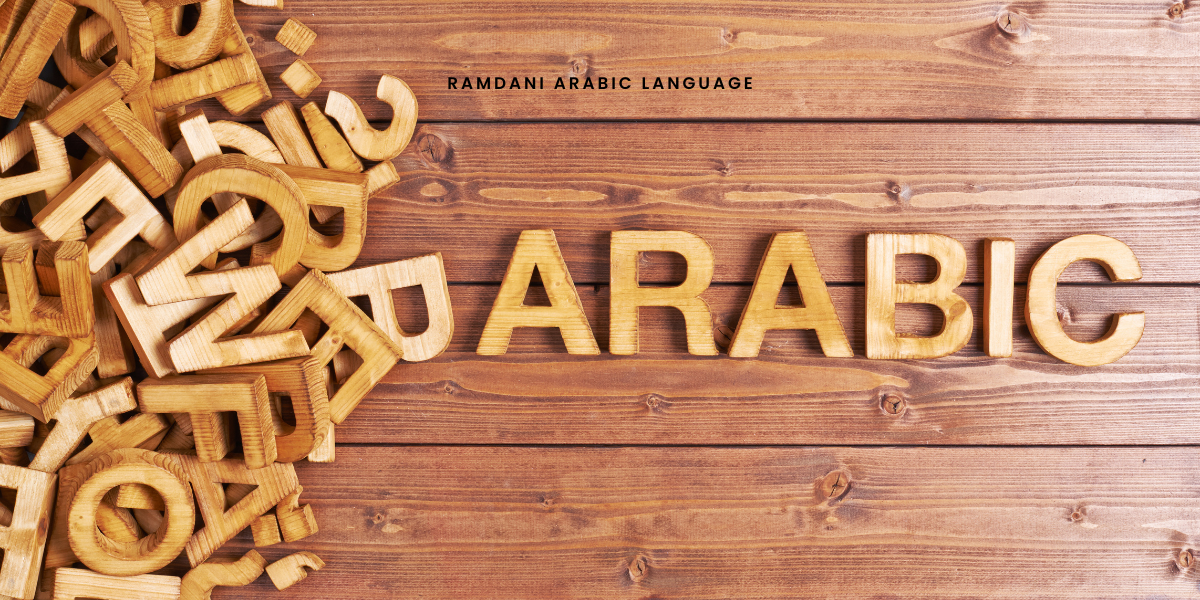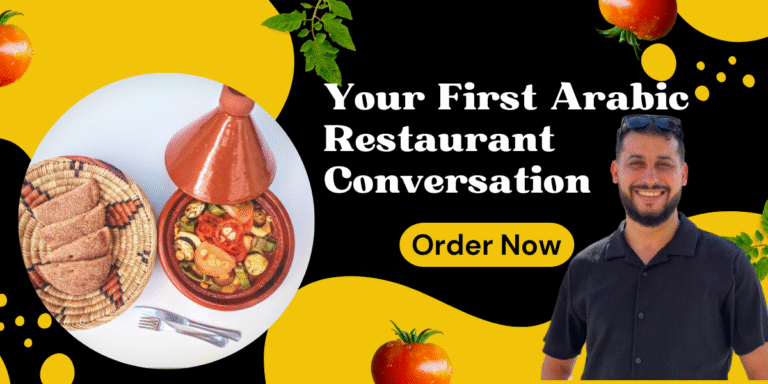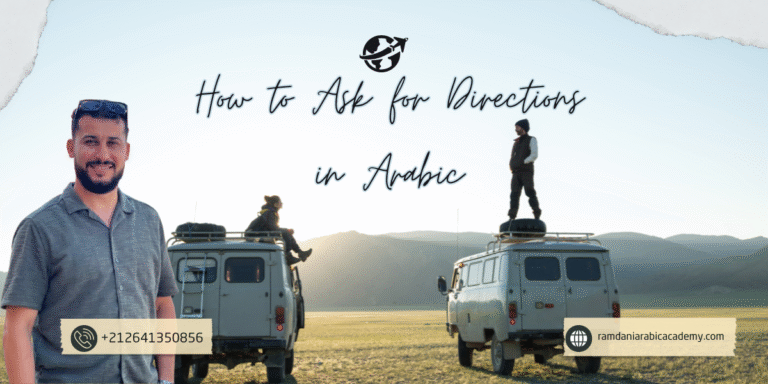Arabic Alphabet for Beginners
The Arabic alphabet is where every learner begins. Before you can read a single word or write a simple sentence, you need to know the letters. This first step may look difficult at the start, but once you take a closer look, you will see that the Arabic script is logical, consistent, and even enjoyable to learn.
Arabic uses 28 letters. They are written from right to left and change shape depending on where they are in the word. This is new for most learners, especially those used to the Latin alphabet. At first, the letters may look like a puzzle. You may wonder how you will ever remember them all. But the alphabet follows clear patterns. Once you learn the shapes and sounds, everything starts to make sense.
Another thing that makes Arabic special is that its alphabet is phonetic. Each letter represents a sound. This means that once you know the letters, you can read almost anything, even words you have never seen before. This is one of the reasons why students often make fast progress after learning the script.
Many learners feel worried about Arabic pronunciation. It has sounds that do not exist in English or other European languages, like ع and ق. At first, these sounds can be hard to say. But when you start with the alphabet and practice slowly, you train your ear and your mouth. Over time, you will be able to produce them naturally.
The alphabet is more than just a tool for reading and writing. It is also a part of the culture. The Arabic script has a long history. It has been used for centuries to write poetry, science, philosophy, and religious texts. It has also developed into beautiful art forms, like Arabic calligraphy, which you will find in mosques, books, and even modern design.
Learning the alphabet does not have to take a long time. With regular practice, most learners can read basic words within a few weeks. You can write the letters by hand, use flashcards, or listen to recordings to match each letter with its sound. Consistency is the key. Ten minutes of practice every day is more effective than two hours once a week.
This article is designed to guide you through this first stage. It will break down each letter, show you how to pronounce it, and explain how it connects with other letters. By the end, you will be able to read and write simple Arabic words with confidence.
Taking this first step can change how you see the Arabic language. Once you learn the alphabet, you will be able to open books, read signs, watch videos, and start to understand real Arabic. Every letter you master brings you closer to the language and to the millions of people who speak it.
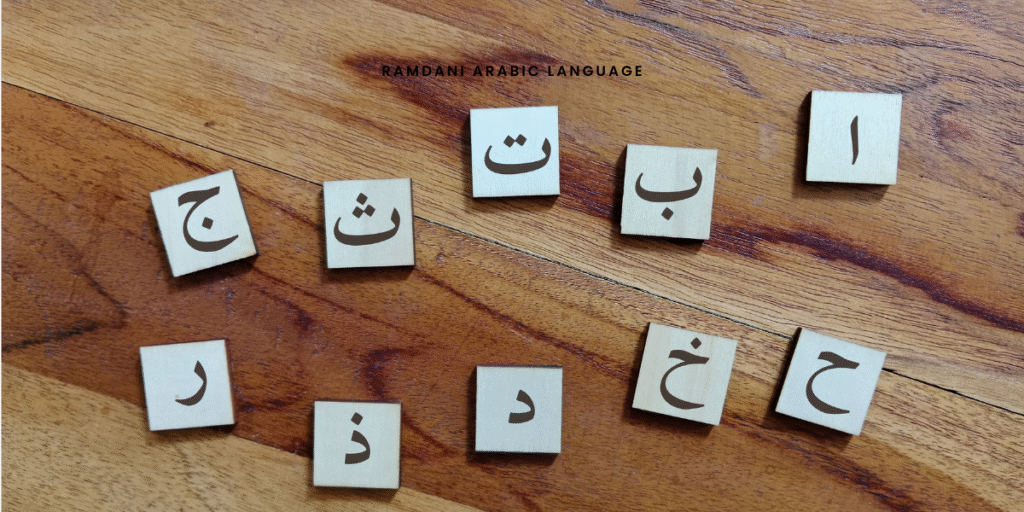
Part 1 – Getting to Know the First Letters
When you begin learning the Arabic alphabet, it helps to divide the letters into smaller groups. This makes it easier to remember their shapes and sounds. Let’s start with a few of the most common letters that also have simple shapes.
The first letter is ا (alif). It is a straight vertical line. It usually represents the long vowel “aa.” It does not connect to the letter that comes after it. This makes it easy to spot in any word. For example, the word for “father” – أب – starts with an alif.
The second letter is ب (baa). It has one dot below and makes the “b” sound, just like in the English word “book.” You will see it often because it appears in many common words. Its shape changes depending on where it is in the word, but you can always recognize it by the single dot under the line.
Next is ت (taa). It looks almost like baa but has two dots above. It makes a “t” sound like in “table.” When you write, pay attention to the dots because they make the difference between letters.
Then comes ث (thaa). It is similar to taa but with three dots above. It makes the “th” sound, like in “think.” Some learners confuse taa and thaa at first, so it is good to practice them together.
Once you know these four letters – alif, baa, taa, and thaa – you can already start forming simple words. For example, the word for “house” is بيت (bayt). It uses baa, yaa, and taa. Even if you have not learned yaa yet, you can see how baa and taa connect to form part of the word.
When practicing these first letters:
- Write each one several times by hand
- Say the sound out loud every time you write it
- Notice how the letter looks at the beginning, middle, and end of a word
- Practice reading short syllables like با (ba), بو (boo), and بي (bee)
This early practice is important because it builds your reading and writing habits. The more time you spend with these first letters, the easier the next ones will be.
After you feel comfortable with these four, you can move to the next group. But do not rush. The goal is to recognize them quickly and connect them without thinking too hard. That is how you build a strong foundation for the rest of the alphabet.
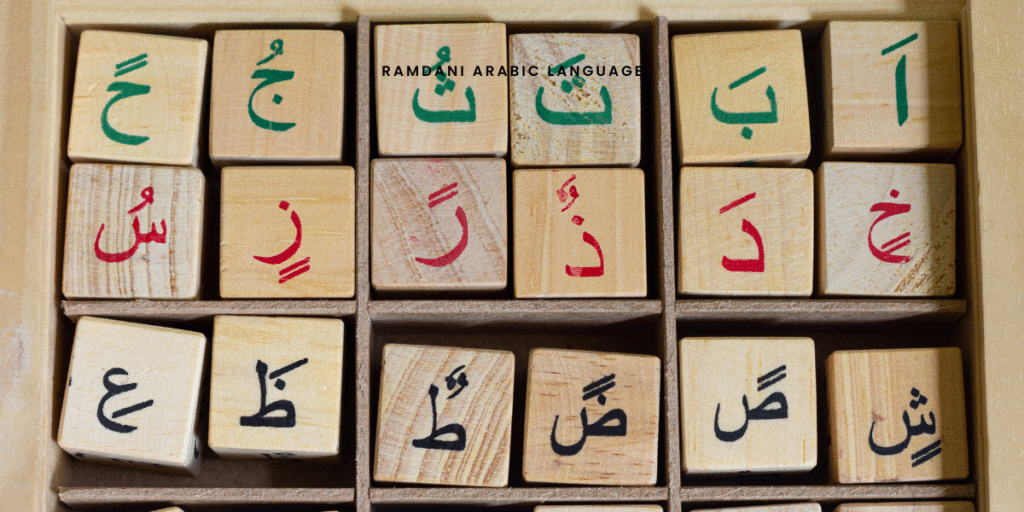
Part 2 – Learning the Next Group of Letters
After you have practiced the first four letters, it’s time to add a new set. These letters look a little more complex, but they follow the same patterns.
The first is ج (jeem). It has one dot below and makes the “j” sound, like in “juice.” In some dialects, this letter is pronounced as a “g,” especially in Egypt. But in Modern Standard Arabic, stick with the “j” sound.
The second is ح (ḥaa). It looks almost the same as jeem but has no dots. This is a new sound for many learners. It is a deep “h” that comes from the throat. It is not the same as the English “h.” You will need to practice listening and repeating it until it feels natural.
The third is خ (khaa). It has one dot above and makes a sound like the “ch” in the German word Bach or the Spanish jamón. It is a strong sound that comes from the throat. When you say it, you should feel some vibration in the back of your throat.
These three letters are a group because they share the same basic shape. The only difference is the number and position of the dots.
Here is how you can practice them:
- Write all three side by side: ج ح خ
- Say the sound for each one as you write
- Focus on the dots – they are the key to telling them apart
- Read simple syllables like جا (jaa), حو (ḥoo), خا (khaa)
At this point, you already know seven letters. You can combine them to form more words. For example:
- جرح (jarḥ) means “wound”
- خبز (khubz) means “bread”
- بحر (baḥr) means “sea”
Try writing these words and reading them slowly. Look at where each letter connects and how the shapes change inside the word.
This is also a good time to train your ear. Listen to native speakers saying words with these sounds. Pay attention to the difference between ح and ه (which you will learn later). This will make your pronunciation more accurate from the start.
Take your time with this group before moving forward. The letters of the Arabic alphabet build on each other, so the stronger your base, the easier it becomes to read full words and sentences later.
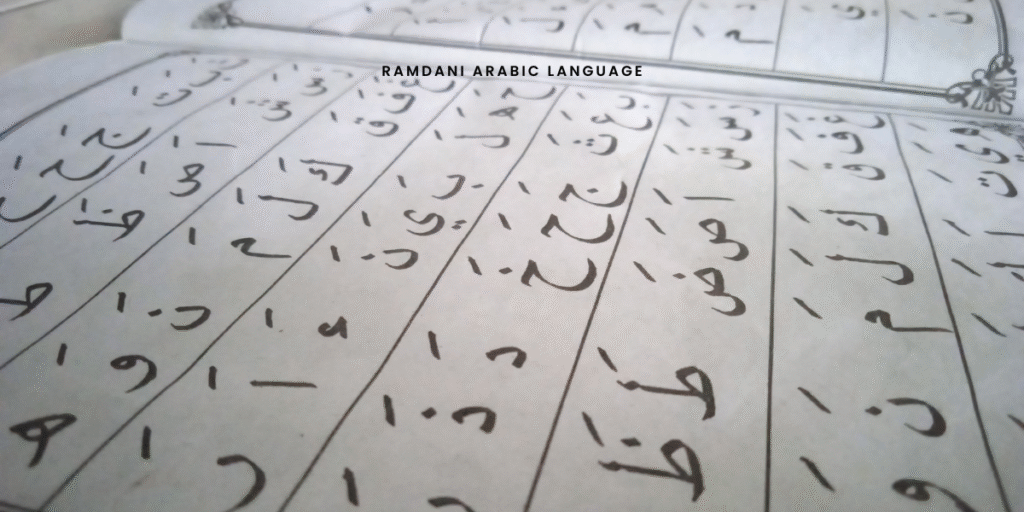
Part 3 – The Non-Connecting Letters
Now that you know several letters, let’s look at a group that behaves differently. These letters do not connect to the letter that comes after them. This means that when you write them, the word will break slightly, even though it is still one word.
The first is د (dal). It makes the “d” sound, like in “door.” Its shape is simple, like a small curve.
Next is ذ (dhal). It is the same shape as dal but with a dot above. It makes the “th” sound, like in “this.” Some learners mix this sound with the “th” of ث (thaa), which sounds like “think.” The difference is that ذ is voiced — you can feel a vibration in your throat when you say it.
Then comes ر (raa). It makes an “r” sound, but not the same as English. It is rolled or tapped with the tip of the tongue, similar to the Spanish “r” in pero. This letter gives Arabic its distinctive rhythm, so practice rolling your r’s early.
Finally, there is ز (zaay). It is the same shape as raa but with a dot above. It makes the “z” sound, like in “zebra.”
These four letters are easier to write than the earlier ones because their shapes stay almost the same in every position. The only challenge is to remember that they never connect to the next letter.
Here are a few practice steps:
- Write each letter several times and notice the break after it
- Pair them with other letters you already know:
- با + د = باد (baad – “wind”)
- زر (zar – “button”)
- بذ (bidh – “seed”)
- با + د = باد (baad – “wind”)
- Say the words slowly and pay attention to the sounds
Because these letters do not connect forward, they give words a clear visual rhythm. You will start recognizing them quickly when reading.
At this point, you know eleven letters. You can already read and write many short words. This is a good time to practice blending sounds and to get used to reading from right to left. Write simple combinations and read them out loud until it feels natural.
Part 4 – The S and Emphatic Letters
The next set of letters builds on what you already know. They look similar but produce very different sounds. These are important because they appear in many common Arabic words.
The first is س (seen). It makes an “s” sound, like in “sun.” Its shape is long and flowing, with three small peaks. It connects easily to the letters before and after it.
Next is ش (sheen). It looks the same as seen but has three dots above. It makes the “sh” sound, like in “shoe.” This is one of the easiest letters for English speakers because the sound is very familiar.
Then we have ص (ṣaad). This is called an emphatic letter. It makes a deep “s” sound produced with the tongue pulled slightly back in the mouth. At first, it may feel strange, but with practice you will feel the difference between س and ص.
The last in this group is ض (ḍaad). It is the emphatic version of د (dal). Its sound is unique to Arabic and is one reason the language is sometimes called lughat al-ḍaad — the language of ḍaad. To pronounce it, press the sides of your tongue against your upper molars while making a “d” sound.
Practice tips for this group:
Write س and ش together to see the difference clearly
Listen to recordings of native speakers pronouncing ص and ض and try to imitate the deep sound
Practice minimal pairs like:
سم (sam – “poison”) vs. صم (ṣam – “deaf”)
دد (dad – “repetition”) vs. ضاد (ḍaad – the letter itself)
Once you are comfortable, start combining them with earlier letters. For example:
شمس (shams – “sun”)
صبر (ṣabr – “patience”)
ضد (ḍidd – “opposite”)
At this point, you have learned 15 letters. You can already write a surprising number of words and even short sentences. The more you practice connecting these letters, the easier the remaining ones will feel.
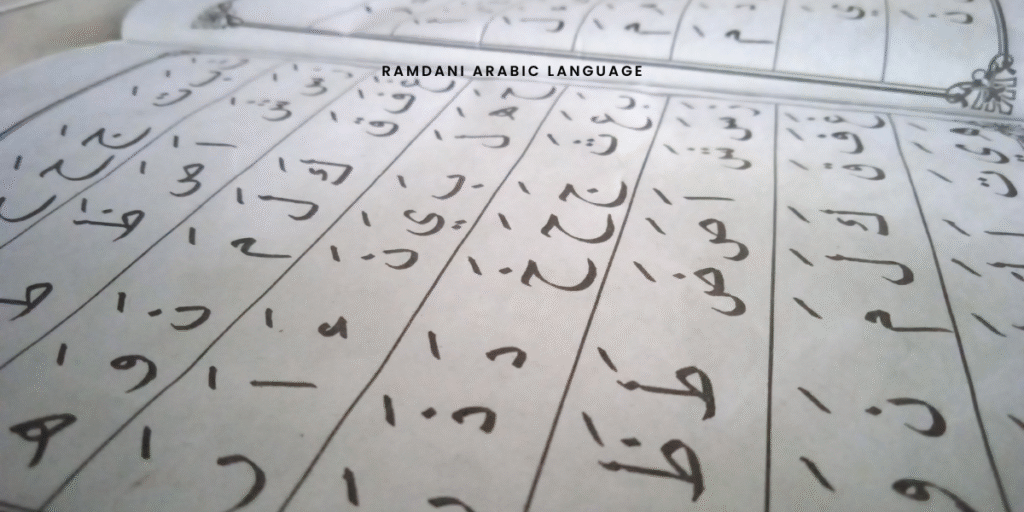
Part 5 – The Deep and Throat Letters
This next group is important because it introduces sounds that do not exist in most other languages. Mastering them early will make your Arabic sound much more natural.
The first is ط (ṭaa). It is the emphatic version of ت (taa). To pronounce it, press your tongue against the roof of your mouth and make a heavy “t” sound. Your tongue should be slightly pulled back. This gives the sound its depth.
Next is ظ (ẓaa). It is the emphatic version of ذ (dhal). It sounds like a heavy, deep “th,” as in “this.” This is another letter where you need to feel the tension in your tongue as you pronounce it.
Then comes ع (ʿayn). This is one of the most famous Arabic sounds and one of the hardest for new learners. It is made deep in the throat by tightening the muscles around your vocal cords. It is not a vowel, even though it can sound like one at first. Practice it slowly by listening to native speakers and trying to copy them.
Finally, there is غ (ghayn). It is like ع but voiced and with vibration, similar to the French “r” or the sound you make when gargling. It is not the same as خ (khaa), even though they come from the same part of the throat.
- Repeat minimal pairs out loud:
- تا (taa) vs. طا (ṭaa)
- ذا (dhaa) vs. ظا (ẓaa)
- عا (ʿaa) vs. غا (ghaa)
- Record yourself and compare your pronunciation to native speakers
- Practice connecting them in words, such as:
- طيب (ṭayyib – “good”)
- ظهر (ẓuhr – “noon” or “back”)
- عمل (ʿamal – “work”)
- غرب (gharb – “west”)
Here is how to practice this group:
This group can take longer to master than earlier ones, but it is worth the effort. Once you are comfortable producing these sounds, your reading and speaking will become much clearer.
By now, you have learned 19 letters — more than two-thirds of the Arabic alphabet. You are ready to move on to the last group of letters, which will complete your knowledge of the script.
Part 6 – Completing the Alphabet
You are now ready for the last group of letters. These are some of the most common ones in Arabic, and once you learn them, you will be able to write anything.
Start with ف (faa). It has one dot above and makes an “f” sound, like in “fish.” Its shape is easy to spot, especially at the beginning of a word.
Next is ق (qaaf). It has two dots above and makes a deep “q” sound from the back of the throat. It is not the same as ك (kaaf). When you say it, your tongue should touch the back of your soft palate. This sound is common in many Arabic words, so spend extra time practicing it.
Then comes ك (kaaf). It makes the “k” sound, like in “kite.” Its shape is simple and it connects easily to other letters.
After that is ل (laam). It makes an “l” sound, like in “light.” It is one of the most frequent letters in Arabic and forms part of the definite article الـ (“al-”), which appears in many words.
Then there is م (meem). It makes the “m” sound, like in “moon.” It is round in shape and easy to recognize.
Next is ن (noon). It has one dot above and makes the “n” sound, like in “night.” Its small, simple shape makes it one of the easiest letters to write.
Then comes هـ (haa). Do not confuse it with ح (ḥaa). This one makes a soft “h” sound, like the “h” in “hat.”
After that is و (waaw). It makes the “w” sound, like in “water,” and sometimes acts as a long vowel “oo.”
Finally, we have ي (yaa). It makes the “y” sound, like in “yes,” and sometimes acts as a long vowel “ee.” It has two dots below when written in isolation or at the end of a word.
Practice steps for this final group:
- Write each letter many times and say its sound out loud
- Practice words that use them together, for example:
- قلب (qalb – “heart”)
- كتاب (kitaab – “book”)
- نور (noor – “light”)
- يوم (yawm – “day”)
- قلب (qalb – “heart”)
- Focus on the difference between ق (qaaf) and ك (kaaf) and between هـ (haa) and ح (ḥaa)
When you finish this group, you will have learned all 28 letters of the Arabic alphabet. You can now read and write any Arabic word with practice.
Final word
Learning the Arabic alphabet is the first big step toward understanding the language. Once you know the letters and their sounds, you can start reading real words and sentences. This opens the door to Arabic books, news, and conversations.
The most important thing now is practice. Write a little every day. Read simple words out loud. Listen to native speakers and copy their pronunciation. Small, regular practice is better than long, irregular study sessions.
Be patient with yourself. Some letters will feel easy and others will take time. The deep sounds like ع and ق may seem impossible at first, but with daily practice they will become natural. Remember that every learner goes through this stage.
If you feel stuck, use tools to help you:
- Flashcards for memorizing letter shapes and sounds
- Audio recordings to improve listening and pronunciation
- Writing exercises to practice connecting letters in words
At Ramdani Arabic Academy, we help learners around the world master the Arabic language step by step. Our website offers lessons, articles, and courses designed to make learning easier. Whether you are a complete beginner or an advanced student, you will find materials that match your level and help you progress.
This article was written by me, Ramdani Mohamed, founder of Ramdani Arabic Academy. I have been teaching Arabic to learners from many different countries and I know the challenges that new students face. My goal is to make the learning process simple, clear, and practical.
Now that you have learned the alphabet, your journey with Arabic can really begin. Keep practicing, keep exploring, and keep learning. With consistency, you will soon be able to read stories, write messages, and speak with confidence.

